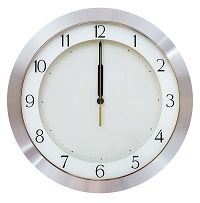Patient Dissatisfaction Waiting to Happen
Wait times seem like such a simple thing, but year after year, surveys of dental patients reveal this as among the top aggravations of going to the dentist office.

You know how important your patients are to your dental practice. Keeping them happy and coming back often is far from an exact science. No measures will be enough to please all patients, of course; some people are happier being unhappy. But there are some simple strategies you can use to make sure most of your patients keep coming back — and coming back with a smile.
Wait times seem like such a simple thing, but year after year, surveys of dental patients reveal this as among the top aggravations of going to the dentist office. No dental office sets out with the goal of keeping patients in the waiting room through two entire hours of The View, but the simple fact is that patients who are dissatisfied with their visit often either start their visit with a long wait, or have waited a long time to get an appointment, or both. There is a sound financial principle around double- and triple-booking patients, because of cancellations, high patient loads, and other factors. But when other factors, such as under-staffing or mis-scheduling are also in play, wait times can get truly out of hand.
Regularly review your scheduling practices. Scheduling can be as much art as science. How often do you and your staff review your appointment policies? Do you keep records on specific patients who seem to reschedule often? Do you have clear, flexible plans in place for when a team member calls out sick? As much as you may not want to do this regularly, do you have a strategy in place for referring patients to other dentists if your load is too full? Turning away customers never seems like a good idea, but it can sometimes be necessary.
Still waiting... Perfect scheduling won’t solve all wait-time problems. Some patients would rather wait an hour on an appointment day than wait an additional three weeks to see the dentist. But they may still get ornery in the waiting room, wondering why the dentist’s time is more important than theirs.
Value your patients’ time — and empathize. Ask patients if they had to wait a long time, and if it’s appropriate, offer an explanation for the delay. Have you ever sat in a mystery traffic jam, only for it to clear up suddenly, with no evidence of an accident, construction, or any other reason causing the delay? Isn’t that even more frustrating? Keep in mind that there’s a big difference between making excuses and offering the patient a fuller picture of the delay. You don’t necessarily have to apologize for the delay (although you can and should if one is called for), but you can empathize with the patient.
Make the time count. Once the patient is in the chair, devote your full attention to that patient, and spend as much time with the patient as you can without starting the cycle all over again in the waiting room. A long wait can be made a distant memory for a patient if they are treated as if they are important as an individual, rather than as a cog in a wheel. Asking the patient questions about themselves and taking a genuine interest in their answers is not only a good practice no matter what, but it may also make the patients realize that some of their wait time was because you were devoting the same level of care to another patient.
Everyone wants to feel important — even at the dentist office. Every interaction with a patient is an opportunity for you to let them know that they matter to you.